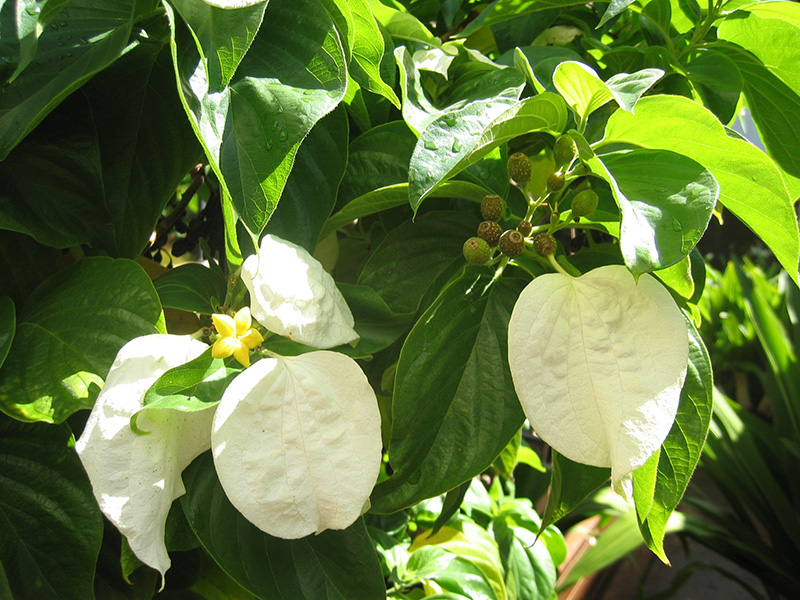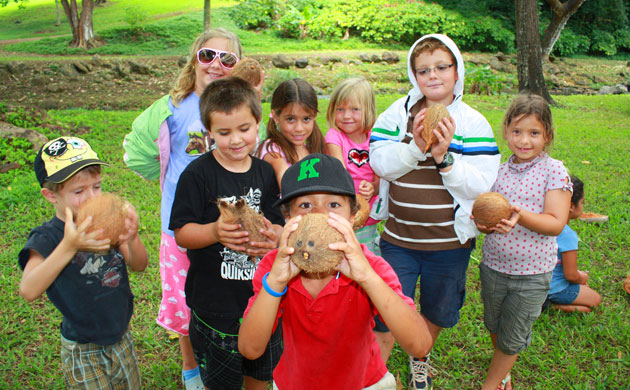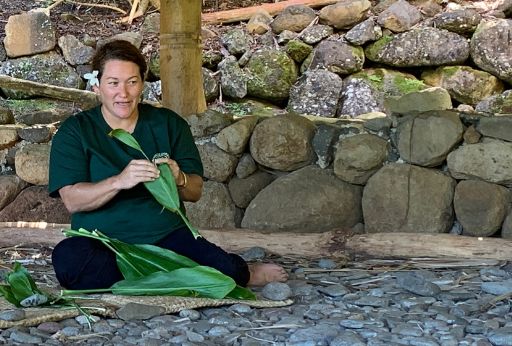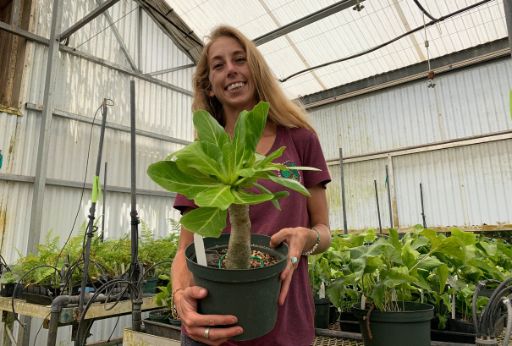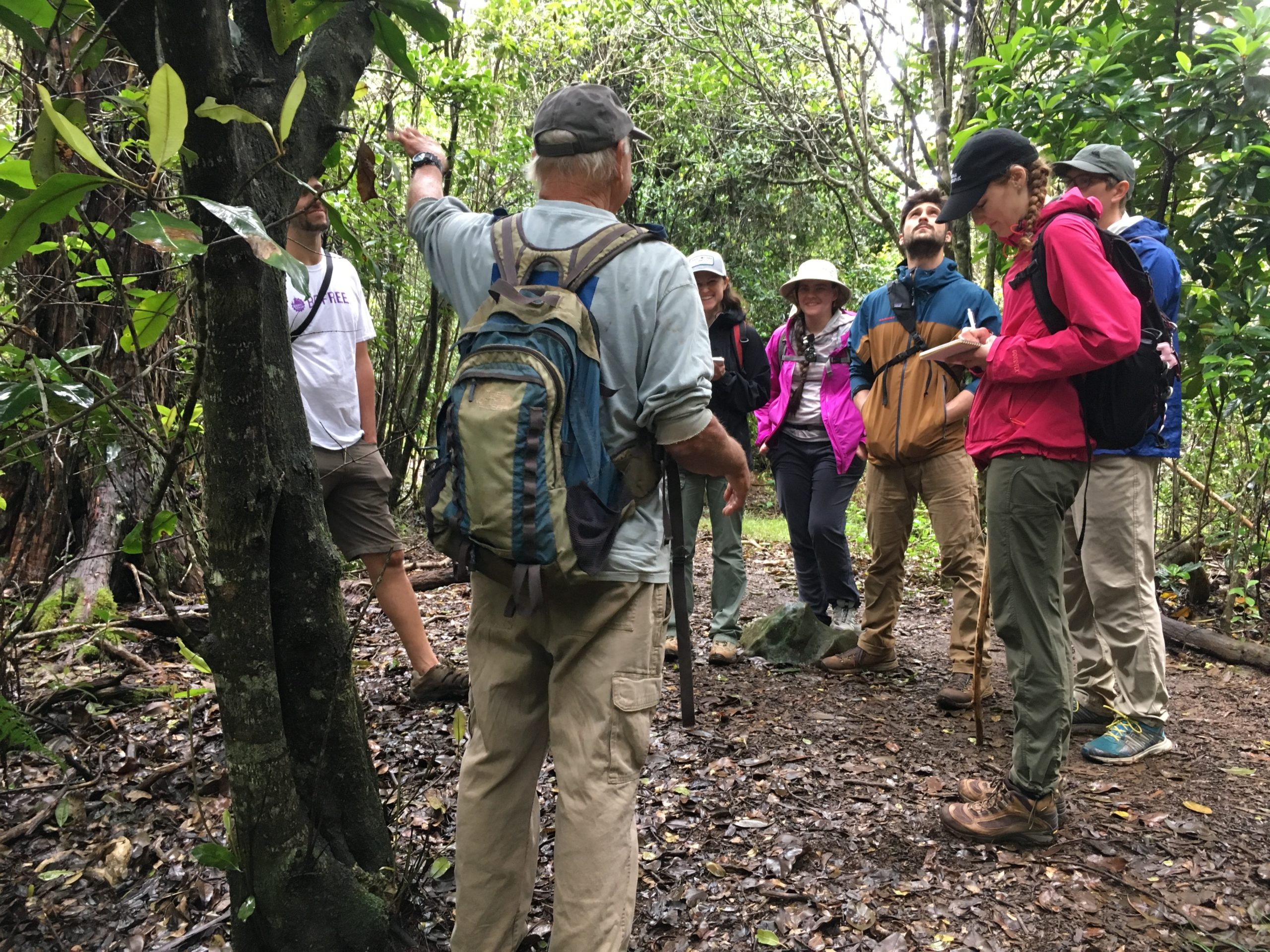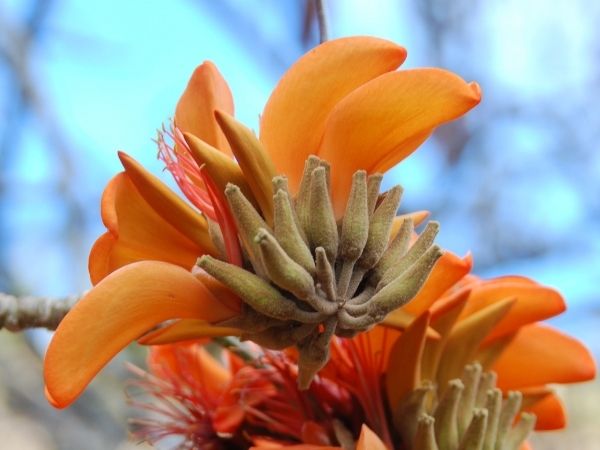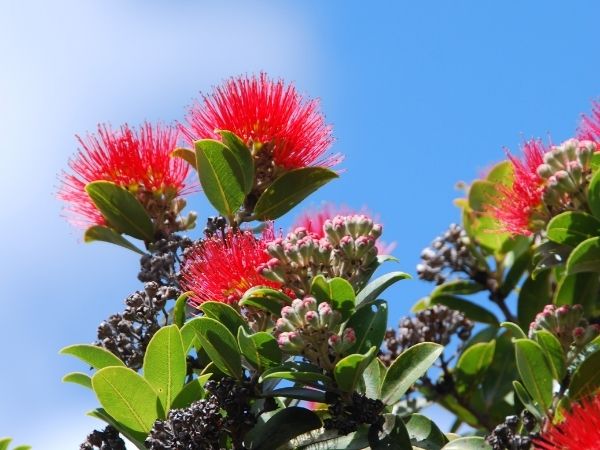Tropical Plant Database - Plant Details
Mussaenda raiateensis
Click on any heading above to view more information about this plant
Conservation Status
- IUCN: least concern
- USFWS: None
Family: RUBIACEAE
Genus: Mussaenda
Species: raiateensis
Species Author: J. W. Moore
Genus: Mussaenda
Species: raiateensis
Species Author: J. W. Moore
Mussaenda raiateensis is an evergreen shrub or small tree 1 to 10 meters in height. Leaves are opposite, bright to dark green, and rounded to elliptic. They are often softly pubescent (covered with short, fine hairs) and prominently veined (ribbed). The flowers are small and tubular and borne in terminal clusters (cymes or panicles). The corolla is five-lobed, spreading and bright yellow. The surrounding calyx has five lobes, with one lobe of some flowers conspicuously enlarged, leaf-like and white in color. In many of the cultivars all five sepals are enlarged. The fruit is a small, fleshy, somewhat elongated berry containing many tiny seeds.
(McLaughlin, John and Garofalo, Joe. Mussaendas for South Florida Landscapes)
(McLaughlin, John and Garofalo, Joe. Mussaendas for South Florida Landscapes)
Bark and leaves of Mussaenda are used medicinally in Samoan and Fijian culture.
(Smith, A. C. 1988. Flora Vitiense Nova Vol. 4)
(McLaughlin, John and Garofalo, Joe. Mussaendas for South Florida Landscapes)
(Smith, A. C. 1988. Flora Vitiense Nova Vol. 4)
(McLaughlin, John and Garofalo, Joe. Mussaendas for South Florida Landscapes)
Mussaenda raiateensis is native from Vanuatu to the Society Islands, where it grows from near sea-level to 1,000 m elevation. There are more than 200 known species of Mussaenda worldwide, of which about ten are found in cultivation, with three of these being widely used for landscaping.
(Smith, A. C. 1988. Flora Vitiensis Nova Vol. 4)
(McLaughlin, John and Garofalo, Joe. Mussaendas for South Florida Landscapes)
(Smith, A. C. 1988. Flora Vitiensis Nova Vol. 4)
(McLaughlin, John and Garofalo, Joe. Mussaendas for South Florida Landscapes)
In some areas of the world such as tropical Africa the fruits of Mussaenda species are consumed as subsistance food.
(McLaughlin, John and Garofalo, Joe. Mussaendas for South Florida Landscapes)
(McLaughlin, John and Garofalo, Joe. Mussaendas for South Florida Landscapes)
- Unassigned - collected by C. G. Lloyd in 0001
- 094745 - collected by C. G. Lloyd in 0001
- 096075 - collected by Art Whistler in 1973
- 096074 - collected by Art Whistler in 1973
- 096068 - collected by Art Whistler in 1973
- 096069 - collected by Art Whistler in 1974
- 096072 - collected by Art Whistler in 1974
- 096071 - collected by Art Whistler in 1975
- 096073 - collected by Art Whistler in 1976
- 096070 - collected by Art Whistler in 1978
- 066543 - collected by Art Whistler in 1978
- 066544 - collected by Art Whistler in 1985
- 003876 - collected by David H. Lorence in 1990
- 010503 - collected by Art Whistler in 1990
- 096067 - collected by Art Whistler in 1991
- 044544 - collected by Art Whistler in 1992
- 096066 - collected by Art Whistler in 1992
- 024020 - collected by Steve Perlman in 1997
- 024044 - collected by Steve Perlman in 1997
- S064130 - collected by Steve Perlman in 1997
- S064132 - collected by K. R. Wood in 1997
- 027016 - collected by K. R. Wood in 1997
- S064131 - collected by Tim Flynn in 1999
- 029194 - collected by Tim Flynn in 1999
- 096076 - collected by Art Whistler in 2000
- 042975 - collected by Art Whistler in 2000
- 091909 - collected by Sterling Bird in 2023
We currently have 27 herbarium specimens for Mussaenda raiateensis in our collection. Click on any specimen below to view the herbarium sheet data.
.svg)

